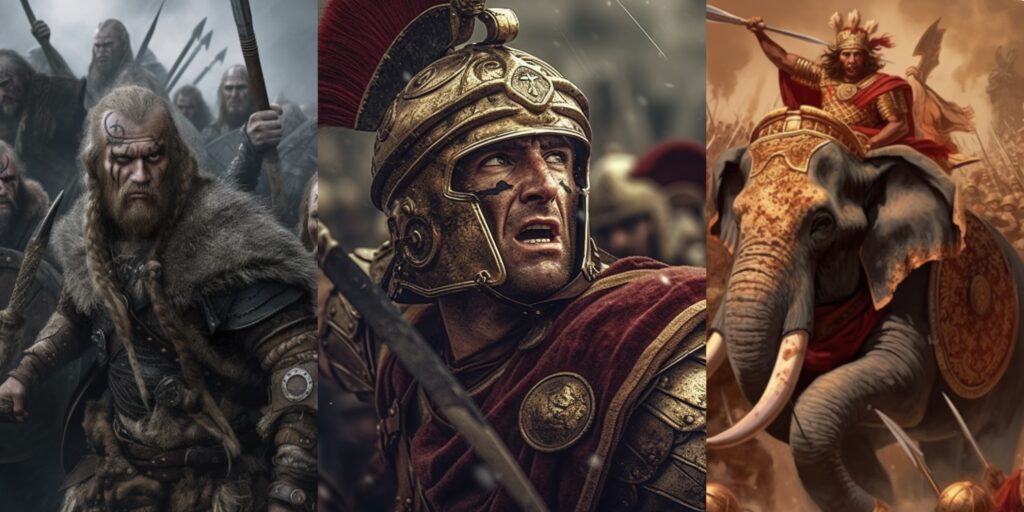This article provides an insight into the Roman triumph, an extravagant celebration held in ancient Rome to honor victorious generals and their armies after successful military campaigns. It explores the purpose of triumphs, which was to celebrate military excellence, affirm the greatness of Rome, and inspire awe in its enemies. The article also delves into the processions, where the general would lead his troops, displaying the spoils of war and showcasing the discipline and unity of the soldiers. The display of spoils served to reinforce Roman dominance and highlight the power acquired through conquest. Furthermore, the article discusses how triumphs contributed to the advancement of military tactics and the psychological impact they had on both Roman citizens and foreign observers. It concludes by mentioning how triumphs became rarer as the Roman Empire expanded and eventually faded away after the fall of the Western Roman Empire.
The Roman Triumph: An Insight into Ancient War Celebrations and Tactics
Introduction
The Roman triumph was an extravagant celebration held in ancient Rome to honor a victorious general and his army after a successful military campaign. It was an unparalleled display of power, wealth, and prestige, showcasing the might of Rome to both its citizens and the world. This article delves into the fascinating world of Roman triumphs, exploring their purpose, processions, and contributions to Roman military tactics.
The Purpose of a Triumph
A triumph served multiple purposes for the Roman people. It celebrated military excellence and affirmed the greatness of Rome. It also justified the wars waged by the Roman Republic and later the Roman Empire. Triumphs were held not only to honor the victorious general but also to inspire awe and fear in the enemies of Rome, demonstrating the empire’s invincibility.
The Procession
The centerpiece of a Roman triumph was an elaborate procession through the streets of Rome. The general would lead his troops through the city, displaying the spoils of war and accompanied by musicians, dancers, and other performers. The procession was a grand spectacle with the general dressed in elaborate regalia and riding in a chariot drawn by four horses. The soldiers would march in formation, showcasing their discipline and unity.
Trophies and Spoils
The triumphal procession would prominently display the spoils of war captured by the victorious army. These could include precious metals, exotic animals, works of art, and even captives from defeated nations. The spoils served to reinforce Roman dominance and highlight the resources and power acquired through conquest. The captives were often paraded as a symbol of the defeated nation’s subjugation.
Military Advancements
Roman triumphs not only served as impressive displays of power but also contributed to the advancement of military tactics. Generals would analyze the strengths and weaknesses of defeated armies, incorporating successful strategies into future warfare. By showcasing captured weaponry and armor, they inspired their soldiers and encouraged military innovation and development.
The Psychological Impact
One of the key aspects of Roman triumphs was their psychological impact. The grand procession, the display of spoils, and the sight of the defeated enemy emphasized the might and invulnerability of Rome. It served as a message to other nations, warning them of the consequences of opposing the empire. Triumphs were carefully choreographed and designed to invoke fear, admiration, and respect from both the Roman citizens and foreign observers.
The End of Triumphs
As the Roman Empire expanded, triumphs became rarer. The military campaigns became more protracted, making it difficult for generals to return within the necessary time frame to be eligible for a triumph. Additionally, emperors started to monopolize the event, using it as a means to consolidate their own power rather than celebrating military achievements. Eventually, the tradition faded away after the fall of the Western Roman Empire.
Conclusion
The Roman triumph was a remarkable celebration that showcased both the military might and the grandeur of ancient Rome. It became an important tool for reinforcing Roman dominance, inspiring fear in enemies, and advancing military tactics. Through triumphs, Rome solidified its place as a formidable empire and left a lasting legacy in the annals of military history.
